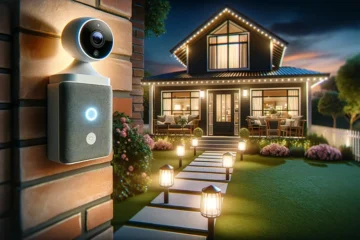Smart Security: How to Choose the Right System for Your Home

Have you ever thought about how secure your home really is? With advancements in technology, smart security systems offer more than just an alarm for intrusions; they provide a comprehensive solution to protect your family and property. Selecting the right system, however, can be a daunting task. This guide aims to simplify the process, ensuring you make an informed decision tailored to your needs.
What is Smart Security?
At its core, smart security integrates traditional security measures with the latest technology, offering real-time monitoring, remote access, and automation of home security features. From smart locks to surveillance cameras, each component plays a crucial role in fortifying your home against potential threats.
Evaluating Your Security Needs
Before diving into the myriad of smart security options available, it’s essential to assess your specific security needs. Consider factors like your home’s location, size, and common security threats in your area. Understanding these aspects will help pinpoint what features are most important for your situation.
Helpful Hint:
Walk through your home and note potential vulnerabilities. Windows, doors, and dark areas outside can benefit significantly from specific smart security features.
Types of Smart Security Systems
- DIY vs. Professional Installation
- Monitored vs. Unmonitored Systems
- Integrated Smart Home Systems
Understanding the different types of systems is crucial in choosing the right one. DIY systems offer flexibility and are generally less expensive, while professional systems come with expert installation and ongoing support. Monitored systems provide peace of mind with 24/7 surveillance, whereas unmonitored systems notify you directly of disturbances.
Key Features to Look For
When selecting a smart security system, certain features stand out as essential for effective home protection. Consider the importance of high-quality video surveillance, smart locks, motion detectors, and environmental monitoring. The right combination of these features can enhance your home’s security manifold.
Stats:
Studies show homes without security systems are up to 300% more likely to be burglarized. The presence of a security system acts as a deterrent to potential intruders.
Comparing Smart Security Brands and Systems
With so many brands on the market, comparing your options is key. Look into customer reviews, system reliability, compatibility with other smart home devices, and subscription costs. Brands like Ring, Nest, and SimpliSafe offer various packages to suit different needs and budgets.
Professional vs. DIY Installation
Choosing between professional and DIY installation depends on your comfort level with technology and your specific security needs. Professional installation ensures your system is set up correctly but comes at a higher cost. DIY installation offers a more hands-on approach and can be more cost-effective.
Helpful Hint:
For those opting for DIY installation, consider choosing systems that offer detailed guides or customer support to assist you through the process.
Integrating Smart Security with Your Smart Home
Integration with existing smart home devices can enhance both convenience and security. Systems that work seamlessly with smart lighting, voice assistants, or thermostats provide a cohesive and efficient smart home experience.
Maintaining Your Smart Security System
Regular maintenance is crucial to ensure your smart security system operates effectively. This includes checking battery levels, updating software, and testing sensors and alarms to prevent any potential failures.
Regular Updates and Upgrades
Technology evolves rapidly, and keeping your system updated can protect against new vulnerabilities. Regularly check for software updates and consider hardware upgrades to enhance security features as needed.
Stats:
A survey revealed that updated smart security systems are 85% more effective at deterring potential intruders, highlighting the importance of keeping your system current.
Best Practices for Smart Security
- Use strong, unique passwords for your security system and Wi-Fi network.
- Enable two-factor authentication for an added layer of security.
- Regularly review security footage and alerts to stay informed.
Adopting these practices can significantly improve the security of your smart home, making it more difficult for intruders to breach.
FAQs
Choosing and maintaining the right smart security system for your home doesn’t have to be overwhelming. By assessing your needs, understanding the options available, and following best practices for installation and maintenance, you can significantly enhance your home’s security. Regular updates, strong passwords, and integration with other smart home devices further maximize your system’s effectiveness, offering peace of mind in today’s digital age.
Smart security is an investment in your safety and well-being. With the right approach, you can create a secure, intelligent home environment that protects what matters most to you.


